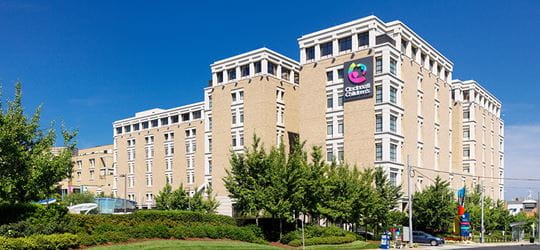Thomas J. Dye, MD
- Sleep Disorders Specialist, Division of Neurology
- Associate Professor, UC Department of Pediatrics
- thomas.dye@cchmc.org
- Board Certified
About
Biography
As a pediatric neurologist, I care for children and young adults with neurologically based sleep conditions including narcolepsy, restless leg syndrome (RLS), periodic limb movement disorder (PLMD) and sleep-related epilepsy. Through my work with collaborative clinics at Cincinnati Children’s Hospital Medical Center, I also see patients with special needs and sleep concerns, as well as circadian sleep disorders.
I work with a group of neurologists, pulmonologists, otolaryngologists, psychologists and basic scientists. This team approach allows the Cincinnati Children’s sleep program to develop new clinical care models and collaborate when caring for the most complex sleep disorders.
My research focuses on understanding the causes of sleep-related movement disorders in children, such as RLS, and identifying the best way to treat them. We study the role certain therapies for epilepsy may play in sleep. We’re also working to bridge the divide between circadian research and the clinical treatment of circadian sleep disorders.
I am honored to be a recipient of the Wayne Hening Young Investigator Award from the International RLS Study Group for my RLS research.
Services and Specialties
Research Areas
Location
Insurance Information
Cincinnati Children's strives to accept a wide variety of health plans. Please contact your health insurance carrier to verify coverage for your specific benefit plan.
Publications
Improvement of Parasomnias After Treatment of Restless Leg Syndrome/ Periodic Limb Movement Disorder in Children. The Journal of Clinical Sleep Medicine. 2019; 15:743-748.
Pharmacological Management of Restless Legs Syndrome and Periodic Limb Movement Disorder in Children. Pediatric Drugs. 2018; 20:9-17.
Epidemiology and Pathophysiology of Childhood Narcolepsy. Paediatric Respiratory Reviews. 2018; 25:14-18.
Outcomes of long-term iron supplementation in pediatric restless legs syndrome/periodic limb movement disorder (RLS/PLMD). Sleep Medicine. 2017; 32:213-219.
Central Hypersomnia. Seminars in Pediatric Neurology. 2015; 22:93-104.
Improving Daytime Sleepiness in Children and Adolescents With Narcolepsy: A Quality Improvement Initiative. Pediatric Neurology. 2025; 173:47-57.
Iron Metabolism and the Role of Iron Therapy in Pediatric Restless Leg Syndrome. Sleep Medicine Clinics. 2025; 20:231-238.
1047 Children and Adolescents with Gut-Brain Disorders Have Worse Sleep Apnea Indices, Sleep Arousals, and Periodic Limb Movements Than Healthy Children. Sleep. 2025; 48:a453.
Youth With Functional Abdominal Pain Disorders Have More Sleep Disturbances. A School-Based Study. Neurogastroenterology and Motility. 2025; 37:e14992.
Clinical and functional studies of MTOR variants in Smith-Kingsmore syndrome reveal deficits of circadian rhythm and sleep-wake behavior. Human Genetics and Genomics Advances. 2024; 5:100333.
From the Blog
Why Is Daylight Saving Time So Hard for Kids (And Parents, Too)?
Thomas J. Dye, MD10/15/2024






Patient Ratings and Comments
All patient satisfaction ratings and comments are submitted by actual patients and verified by a leading independent experience management company, Qualtrics. Patient identities are withheld to ensure confidentiality and privacy. Only those providers whose satisfaction surveys are administered through Cincinnati Children’s Hospital Medical Center are displayed. Click here to learn more about our survey